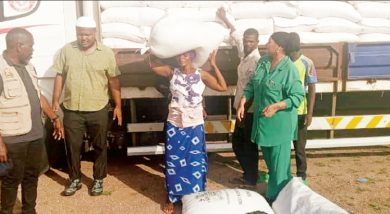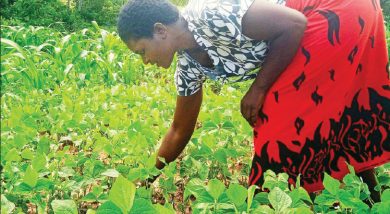Maize export ban costs Malawi k69bn
Malawi has lost about K69 billion in potential export revenue due to the maize export ban imposed after the 2016/17 harvesting period, a study by the International Food Policy Research Institute (Ifpri) has estimated.
Findings of the study, prepared at the request of Britain’s Department for International Development (DfID) and the United States Agency for International Development (USaid) estimate that local traders could have earned between K39 and K69 billion in gross revenues if they were allowed to export to Kigali in Rwanda and between K29 and K54 billion for exports to Dar es Salaam in Tanzania in August or September this year.

The report also estimates that exports to Nairobi, Kenya would have been between K25 billion and K46 billion lower than the other two markets due to higher road transportation costs.
Within the ban period, wholesale maize prices in the country were said to be between 45 to 70 percent lower than in the above mentioned East African markets in July 2017.
Famine Early Warning System (Fews.net) also reported that informal maize exports to the mentioned countries increased by 76 percent above the five-year average due to the increasing demand for maize in the East African region.
The ban, coupled with the slow intervention of the State produce trader Agricultural Development and Marketing Corporation (Admarc) meant that local farmers were placed at a huge disadvantage.

However, the lifting of the ban in October 2017 by President Peter Mutharika coincided with the harvesting period in the above markets, thereby limiting the export scope of the commodity which had been in store for months, mostly in the hands of middle men.
The maize export ban, according to government, was put in place to ensure that the country stocked adequate supplies for the strategic grain reserves (precisely about 234 000 metric tonnes) before opening up to the foreign markets.
The ban was, however, heavily criticised by civil society organisations (CSOs) and economists who argued that it limited the market for domestic farmers, causing the domestic prices for the commodity to drop dramatically to as low as K50 per kilogramme (kg) despite the government setting K170 per kg as minimum price.
Farmers Union of Malawi (FUM) president Alfred Kapichira-Banda is on record as faulting Admarc for its late intervention into the market and piecemeal purchase of maize which has given the opportunity to middle-men to take advantage of the maize prices.
Malawi Confederation of Chambers of Commerce and Industry (MCCCI) chief executive officer Chancellor Kaferapanjira also faulted government for failing to bring the much needed foreign exchange in the country.
Commenting on the issue, Economics Association of Malawi (Ecama) executive director Maleka Thula said the findings are not surprising.
He said: “Theoretically, export bans or price restrictions distort market equilibrium. In the first place, the ban hit the small-scale farmers hard, to an extent that those that borrowed from banks could not ably service their loans due to dampened maize prices, affecting their realisation from maize sales, thus leading to increase of non-performing loans from the agricultural sector.”
In a separate interview, Catholic University of Malawi dean of social sciences Gilbert Kachamba agreed with Thula, saying Malawi has gained as a nation from the maize export ban.
He said: “As a country, I believe it was right to ban the maize export despite losing the said fortune. We have gained some self-esteem in that we are not a hunger-stricken country.”
Last week, Minister of Finance, Economic Planning and Development Goodall Gondwe told Parliament that Treasury has given Admarc a K25 billion bailout after repaying debts the parastatal owed three local commercial banks.
Earlier, government also announced a provision of K7.5 billion to Admarc for maize purchases, albeit during the lean period when most farmers had sold their grain to private traders.





